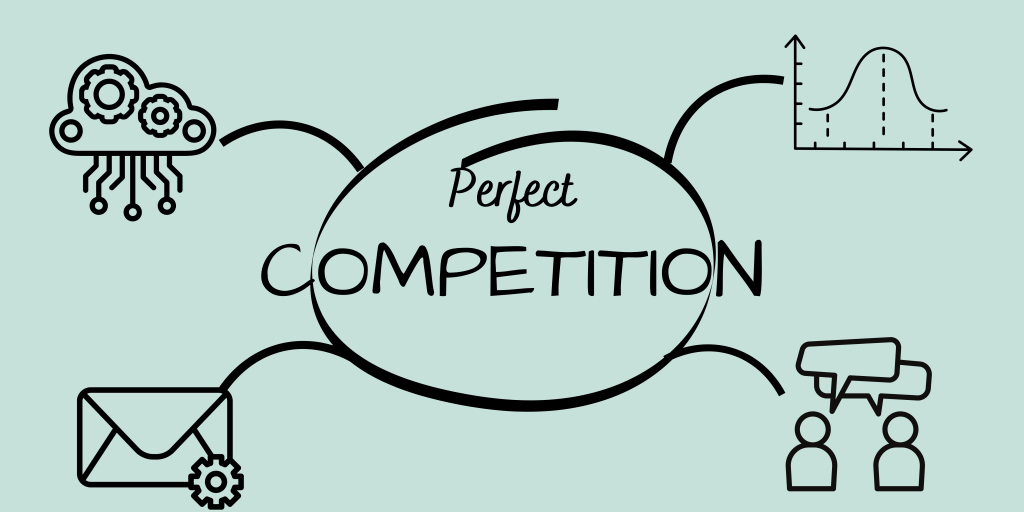8.1 Characteristics of Perfect Competition

Many Firms
Many firms, means that from the perspective of one individual firm there is no way to raise or lower the market price for a good. This is because the individual firm’s output is such a small part of the overall market that it does not make a difference in terms of price. Firms are, therefore, price takers, meaning that their decision is simply how much to sell at the market price. If they try and sell for a higher price, no one will buy from them, and they could sell for a lower price, but if they did so, they would only be hurting themselves because it would not affect their quantity sold. Thus from an individual firm’s perspective, they face a horizontal demand curve.
Identical Goods
Identical goods mean there is nothing to distinguish one firm’s goods from another. For example: corn – once all the corn is dumped into the grain elevator there is absolutely no way to tell from which farm a particular kernel of corn came. This means there is no way for one seller to differentiate their output to try and sell it at a different price on the premise that it is different.
Barriers to Entry
It is very easy for firms to start and stop selling in this market. For example, if a farmer decides to plant corn instead of soybeans, there is nothing preventing them from doing so. Likewise, a farmer who wishes to plant soybeans instead of corn faces no barriers. In general, free entry and exit mean that there are no legal barriers to entry, like needing a special permit only given to a limited number of firms, and no major cost obstacles, like needing to invest millions of dollars in a manufacturing plant as a new car manufacturer would.
There is an implicit assumption here and that is, buyers and sellers have full information meaning that they know the prices charged by every firm. This is important because without it a firm could possibly charge an uninformed consumer more and this violates the price taker condition.
Attribution
“8.0 Introduction to Perfect Competition” in Principles of Economics 2e by OpenStax is licensed under Creative Commons Attribution 4.0 International License.
“Module 13: Perfect Competition” in Intermediate Microeconomics by Patrick M. Emerson, Oregon State University is licensed under a Creative Commons Attribution-NonCommercial-ShareAlike 4.0 International License, except where otherwise noted.

